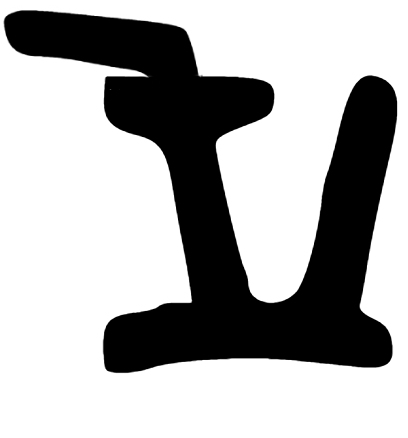Mehama on:
[Wikipedia]
[Google]
[Amazon]
Mehama ( Bactrian: ''Meyam'', 

 ''Me-ha-ma''), ruled c.461-493, was a king of
''Me-ha-ma''), ruled c.461-493, was a king of
Showcase 8
/ref> At that time, it is considered that the Alchon Huns were firmly in charge of the Buddhist region around
File:Mehama_coin.jpg, Coin of Mehama, with portrait and fire altar with attendants on the reverse, in the style of Sasanian coinage.
File:Mehama. Circa 461-493 Bactria mint.jpg, Coin of Mehama, circa 461-493, in the style of the Kushans,
Brahmi
Brahmi (; ; ISO: ''Brāhmī'') is a writing system of ancient South Asia. "Until the late nineteenth century, the script of the Aśokan (non-Kharosthi) inscriptions and its immediate derivatives was referred to by various names such as 'lath' o ...
: 
Alchon Huns
The Alchon Huns, ( Bactrian: αλχον(ν)ο ''Alchon(n)o'') also known as the Alchono, Alxon, Alkhon, Alkhan, Alakhana and Walxon, were a nomadic people who established states in Central Asia and South Asia during the 4th and 6th centuries C ...
dynasty. He is little known, but the Talagan copper scroll
The Talagan copper scroll, also known as Schøyen Copper Scroll (58 x 26 cm), was discovered and published in 2006 by Gudrun Melzer and Lore Sander. The scroll, dated to 492/3, mentions the four Alchon Huns kings Khingila, Toramana, Javukha, and ...
mentions him as an active ruler making a donation to a Buddhist stupa
A stupa ( sa, स्तूप, lit=heap, ) is a mound-like or hemispherical structure containing relics (such as ''śarīra'' – typically the remains of Buddhist monks or nuns) that is used as a place of meditation.
In Buddhism, circum ...
in 492/93.For an image of the copper scroll: Coin Cabinet of the Kunsthistorisches Museum ViennShowcase 8
/ref> At that time, it is considered that the Alchon Huns were firmly in charge of the Buddhist region around
Taxila
Taxila or Takshashila (; sa, तक्षशिला; pi, ; , ; , ) is a city in Punjab, Pakistan. Located in the Taxila Tehsil of Rawalpindi District, it lies approximately northwest of the Islamabad–Rawalpindi metropolitan area a ...
, but had not yet started to conquer the Indian mainland.
Mehama is named ''Maha Shahi Mehama'' (Great Lord Mehama) in the Talagan copper scroll
The Talagan copper scroll, also known as Schøyen Copper Scroll (58 x 26 cm), was discovered and published in 2006 by Gudrun Melzer and Lore Sander. The scroll, dated to 492/3, mentions the four Alchon Huns kings Khingila, Toramana, Javukha, and ...
.
Mehama appears in a letter in the Bactrian language he wrote in 461-462 CE. The letter comes from the archives of the Kingdom of Rob
The Kingdom of Rob ( Bactrian: , ) was a small kingdom in Central Asia, in southern Bactria. It corresponds to the modern Rui in the Province of Samangan, modern Afghanistan. Numerous documents in the Bactrian language in the Bactrian script (a ...
, located in southern Bactria. In this letter he presents himself as:
Kadag is Kadagstan, an area in southern Bactria, in the region of Baghlan. Significantly, he presents himself as a vassal of the Sasanian Empire
The Sasanian () or Sassanid Empire, officially known as the Empire of Iranians (, ) and also referred to by historians as the Neo-Persian Empire, was the last Iranian empire before the early Muslim conquests of the 7th-8th centuries AD. Named ...
king Peroz I
Peroz I ( pal, 𐭯𐭩𐭫𐭥𐭰, Pērōz) was the Sasanian King of Kings () of Iran from 459 to 484. A son of Yazdegerd II (), he disputed the rule of his elder brother and incumbent king Hormizd III (), eventually seizing the throne after ...
.
Mehama (r.461-493) allied with Sasanian king Peroz I
Peroz I ( pal, 𐭯𐭩𐭫𐭥𐭰, Pērōz) was the Sasanian King of Kings () of Iran from 459 to 484. A son of Yazdegerd II (), he disputed the rule of his elder brother and incumbent king Hormizd III (), eventually seizing the throne after ...
(459-484) in his victory over the Kidarites
The Kidarites, or Kidara Huns, were a dynasty that ruled Bactria and adjoining parts of Central Asia and South Asia in the 4th and 5th centuries. The Kidarites belonged to a complex of peoples known collectively in India as the Huna, and in Eur ...
in 466 CE, and may also have helped him take the throne against his brother Hormizd III.
It is thought that Mehama, after being elevated to the position of Governor for Peroz, was later able to wrestle autonomy or even independence.
Shiva
Shiva (; sa, शिव, lit=The Auspicious One, Śiva ), also known as Mahadeva (; Help:IPA/Sanskrit, ɐɦaːd̪eːʋɐ, or Hara, is one of the Hindu deities, principal deities of Hinduism. He is the Supreme Being in Shaivism, one o ...
on the reverse. Bactria mint
File:Bactrian language letter from Meyam, King of the people of Kadag, 461-462 CE.jpg, Bactrian language letter from "Meyam, King of the people of Kadag", dated to 461-462 CE.
See also
*Kidarites
The Kidarites, or Kidara Huns, were a dynasty that ruled Bactria and adjoining parts of Central Asia and South Asia in the 4th and 5th centuries. The Kidarites belonged to a complex of peoples known collectively in India as the Huna, and in Eur ...
References
Central Asia Hephthalites 493 deaths {{CAsia-hist-stub